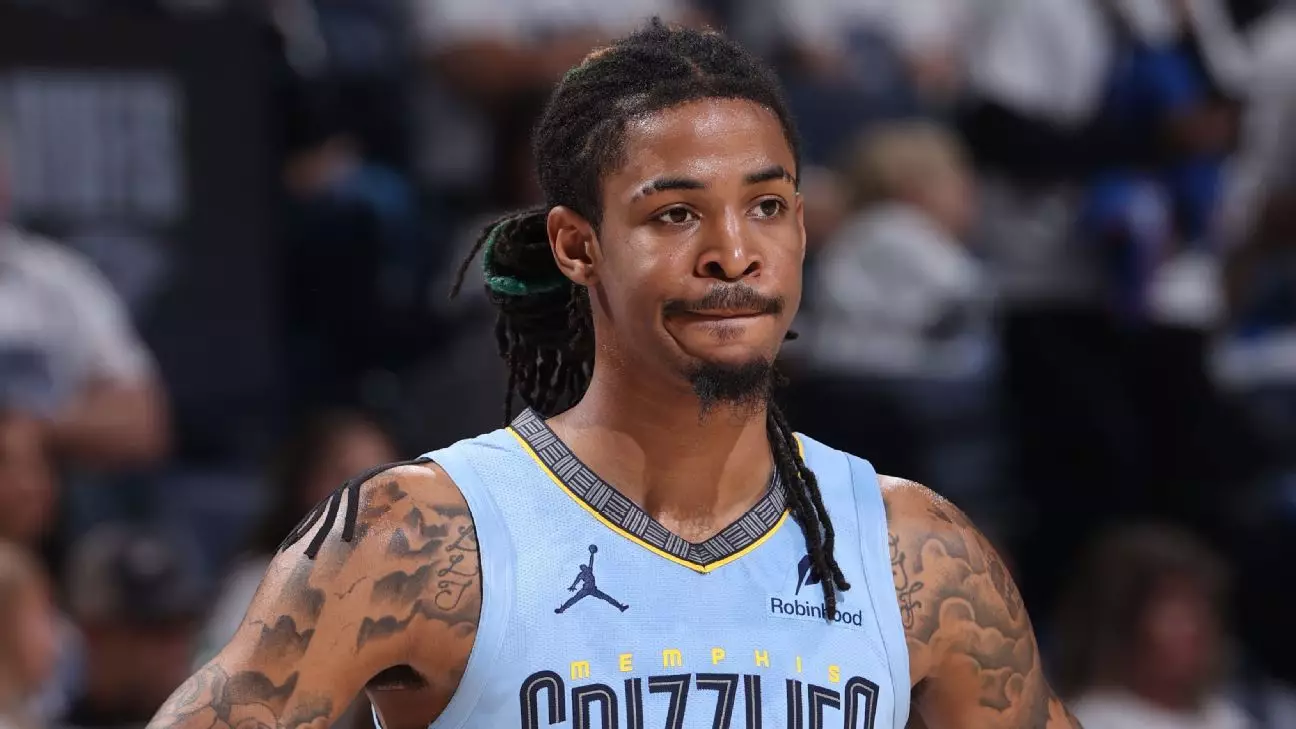In the world of competitive sports, the line between camaraderie and aggression can blur, leading to situations that, while seemingly mundane, end up igniting controversies that reach far beyond the basketball court. A recent incident involving renowned NBA player Ja Morant and a high school player, Joshua Holloway, exemplifies this troubling dynamic. The dismissal of Holloway’s lawsuit against Morant, following an altercation during a pickup game, invites us to explore the implications of sportsmanship, self-defense, and the responsibilities of public figures in sports.
The Events That Unfolded
The incident took place in July 2022, when Holloway, then a 17-year-old athlete invited to a friendly game at Morant’s parents’ home, found himself embroiled in a physical confrontation with the two-time All-Star. The altercation escalated when Holloway allegedly threw a basketball at Morant during a “check-ball” situation, which serves the purpose of establishing readiness among players. Morant, reportedly feeling threatened, reacted by punching Holloway in the face, a move that would catalyze a dramatic legal battle.
This is where the narrative begins to complicate. While Morant claims that his reaction was rooted in self-defense, Holloway’s subsequent lawsuit painted him as the aggressor, asserting that the NBA player had overstepped by using disproportionate force in response to a non-threatening action. The incident raises questions about how athletes interpret aggression and conflict, particularly in casual games where competitive spirits often cloud judgment.
The Legal Ramifications
Shelby County Circuit Judge Carol Chumney’s ruling to dismiss the case determined that Morant had immunity under Tennessee’s self-defense laws, specifically invoking the state’s “stand your ground” statute, which allows individuals to utilize force in situations where they feel threatened. By granting Morant this legal protection, Chumney’s order not only legitimizes his actions but nuances the conversation around appropriate responses in athletic environments.
The legal proceedings took on a life of their own, as each side presented testimonies that contradicted the others. Holloway’s experience at the hearing led to a strategy that aimed to portray Morant as the instigator, a claim countered effectively by the presence of witnesses, including former NBA player Mike Miller, who supported Morant’s assertion that Holloway’s actions precipitated the escalation. In a scenario rich with potential lessons about conflict resolution and sportsmanship, the courts sought to navigate the murky waters of athlete behavior outside the official competition.
Reflection on Responsibility and Leadership
This case extends beyond mere physicality; it brings forth vital discussions on the roles athletes occupy in society. As public figures, professional athletes are often viewed as role models, particularly by the youth aspiring to follow in their footsteps. Judge Chumney’s observation about both athletes being leaders underlines an essential truth about responsibility. The actions of individuals like Morant carry weight, influencing perceptions about proper conduct, maturity, and conflict resolution not just among peers but among impressionable fans.
Morant and Holloway, both pivotal figures within their respective communities, have an opportunity to exemplify dignity and grace. Yet, the events that transpired serve as a reminder that even in the most colloquial settings, the consequences of conflicts can resonate significantly, impacting reputations and careers.
Instead of allowing competitive instincts to dictate behavior, athletes at all levels must strive for maturity and reflection during moments of contention. This incident sheds light on the inadequacies of the current discourse surrounding physical altercations in sports. While the legal system has its role, it cannot be the sole arbiter of accountability for behavior that should naturally be governed by respect, integrity, and the spirit of sportsmanship.
As Morant and Holloway move forward from this case, it is critical that they recognize their unique opportunity to redefine their narratives. The courts may dismiss the legal battles, but there remains an ongoing need for dialogue about the lessons learned in sports and the profound impact athletes can have on their communities. By fostering a greater sense of self-awareness and understanding the intricacies of their influence, they stand to not only elevate their careers but inspire the next generation to handle disputes with wisdom rather than hostility.


Leave a Reply